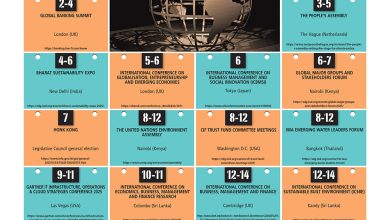CALIFORNIA WILDFIRES
GONE UP IN SMOKE
Rajika Jayatilake probes California’s worst wildfires in history and how they’re becoming year-round disasters
The image of the Golden State of California never fails to bring the American dream to the fore. As singer Beth Andersen said, “everything is just better in California – the wine, the food, fruits and vegetables, the comforts of living. Even the instrumentalists are generous and curious. Everything is wonderful.”
However, ferocious and unpredictable wildfires aggravated by climate change have been a thorn in the side of the 40 million residents of California over the past decade, leading to the invention of new words such as ‘firenado’ (fire tornado), ‘gigafire,’ ‘fire siege’ and ‘fire pandemic.’
This is understandable, considering that California has 78 more annual days of fire now than it did 50 years ago. In fact, consistent droughts have turned the wildfire season into a year-round concern.
Moreover, large wildfires in December – once unheard of in California – are now common due to hotter, drier weather. Research scientist with the US Geological Survey Dr. Jon Keeley notes that wildfires in the summer are generally bigger but slower burning. Wildfires in the winter “are much more destructive because they happen much more quickly,” he says.
The latest catastrophe took place when more than four major wildfires blazed across Los Angeles County in January. Fires flattened entire neighbourhoods, destroyed at least 10,000 properties – many in exclusive neighbourhoods – and killed over 20 people.
It could become the most expensive wildfire in US history, costing between US$ 135 and 150 billion.
The biggest blaze happened where it began – in the Pacific Palisades on the Pacific Ocean – and spread rapidly to other neighbourhoods such Eaton in Altadena, Hurst, the Lidia, Sunset and starting the Woodley fires in Los Angeles, the Olivas fire in Ventura, the Tyler fire in Riverside, and the Kenneth fire in the San Fernando Valley.
Los Angeles fire chief Kristin Crowley says: “The Palisades fire is one of the most destructive natural disasters in the history of Los Angeles.”
The brutality of these California wildfires was unprecedented. Wildfire scientist Dr. Chad Hanson explains that “a combination of factors” came together simultaneously to create this monstrous firestorm.
US Drought Monitor recorded that over 83 percent of Los Angeles County experienced a drought with not even a quarter inch of rain since April last year.
“Had we seen significant or widespread precipitation in the weeks and months leading up to this event, we would not be seeing the extent of devastation we are currently seeing,” says climate scientist at the University of California – Los Angeles (UCLA) Dr. Daniel Swain.
But California experienced several wet winters in previous years. During the winter of 2023, Southern California experienced several deadly rainstorms, resulting in flooded roads, floating vehicles and mudslides. These wet winters led to flourishing vegetation, which became towering masses of dry fuel as droughts hit the state.
Expert Senior Meteorologist with AccuWeather Heather Zehr explains: “It is that dramatic change from very wet to very dry that can set up these more extreme situations, and that is likely affected by climate change.”
The journal Nature referred to these frequent massive swings from dry to wet to dry conditions as “weather whiplash,” which occurs when the Earth warms due to fossil fuel pollution. Weather whiplash can lead to frequent and severe wildfires, and flash floods.
As it also happened, the Santa Ana winds – which are streams of dry inland air pushing toward the coast in the fall and winter – of up to 160 kmph in January were monstrous. They whipped flames and embers faster than otherwise, and fed the dry vegetation that was eager to burn.
These dry and vulnerable landscapes have been further exposed by the loss of some 163 million trees as revealed in an UCLA study. Pine and oak, which were abundant in California, are also vulnerable to insect infestation and disease.
When these huge trees crash to the ground and reman uncleared, they add to the dry vegetation and increase the ready fodder for the next devastating fire. As more trees die, another weapon to fight climate change is compromised, since healthy trees absorb carbon dioxide from the environment – and that process is reversed when trees burn.
Meanwhile, the Los Angeles Fire Department (LAFD) says it has faced “unprecedented operational challenges due to the elimination of critical civilian positions and a US$ 7 million reduction in overtime variable staffing hours.”
This severely limited its “capacity to prepare for, train for and respond to large-scale emergencies,” it adds.
One in 10 wildfires in the US is caused by utility equipment. In the case of the January wildfires however, arson, utility lines and lightning – which are considered common sources of fires in America – have been ruled out as culprits.
Unanticipated factors collaborated to create the worst wildfire event that California has seen. As fire scientist Dr. Stephen Pyne wryly avers, this is the ‘Pyrocene’ – the age of fire.
The Palisades fire is one of the most destructive natural disasters in the history of Los Angeles
Kristin Crowley
Chief of the Los Angeles
Fire Department






